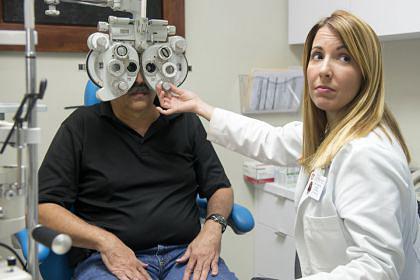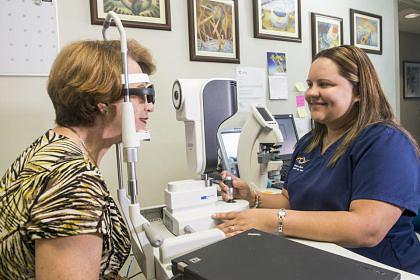A typical eye exam comprises various tests designed to check your vision and examine the appearance and function of all parts of your eyes.
- Eye muscle test evaluates the muscles that control eye movement for weakness, poor control or lack of coordination.
- Visual acuity test measures how clearly you see letters in a Snellen chart.
- Refraction assessment checks for refractive errors that require vision correction such as eyeglasses or surgery.
- Visual field test (perimetry) determines if you have difficulty seeing in any areas of your overall field of vision.
- Color vision testing detects color deficiencies.
- Slit-lamp examination checks the eyelids, lashes, cornea, iris, lens and fluid chamber between your cornea and iris.
- Retinal examination evaluates the back of your eye, including the retina, the optic disk and the underlying layer of blood vessels that nourish the retina.
- Glaucoma screening uses tonometry to measure fluid pressure inside your eye (intraocular pressure).
At the end of your eye exam, you doctor will inform you of the results of all the tests, provide an assessment of your vision, and inform you about your risk of eye disease and preventive measures you can take to protect your eyesight.




